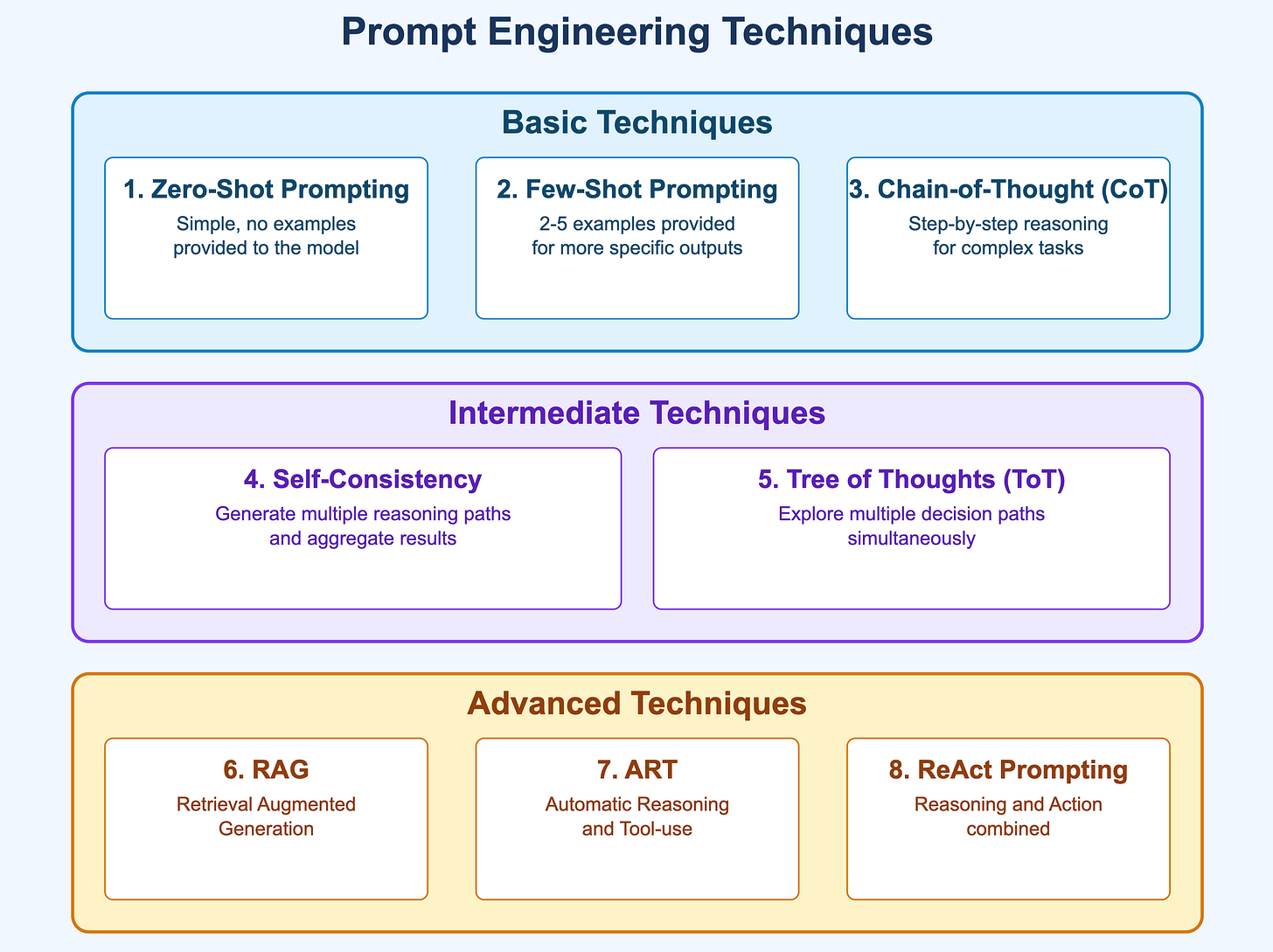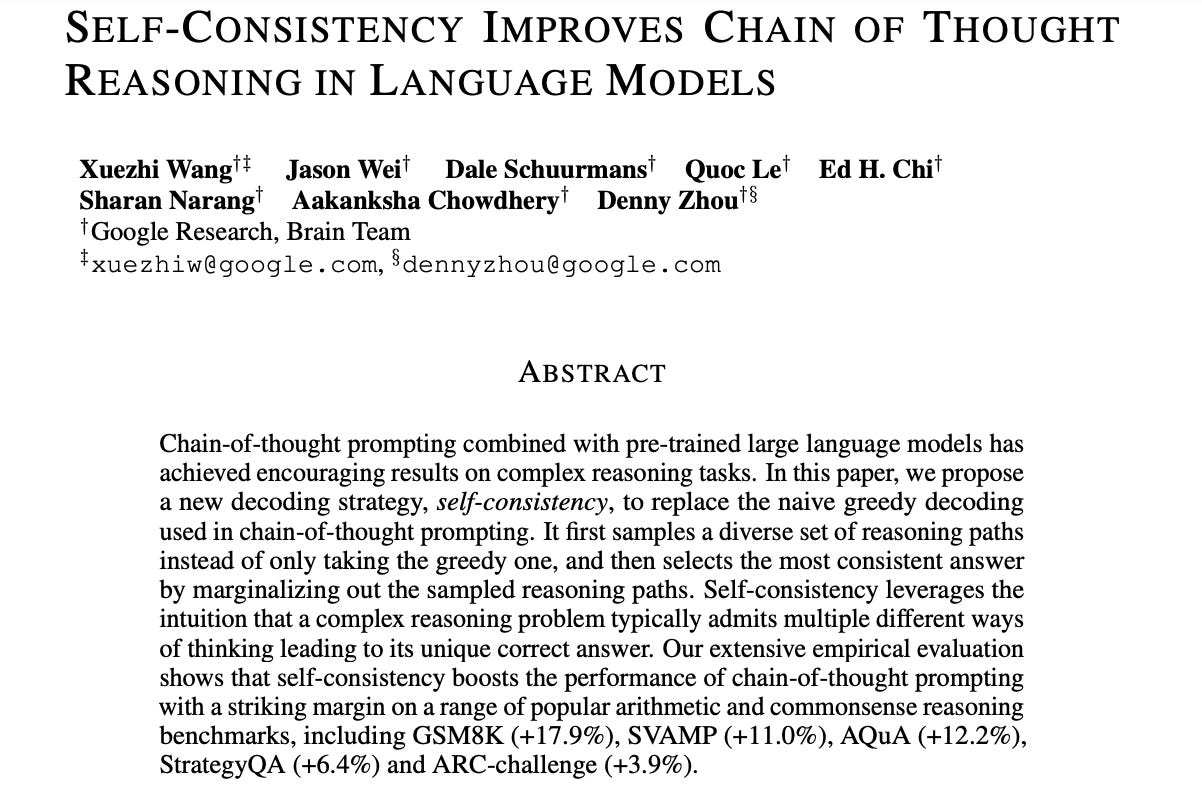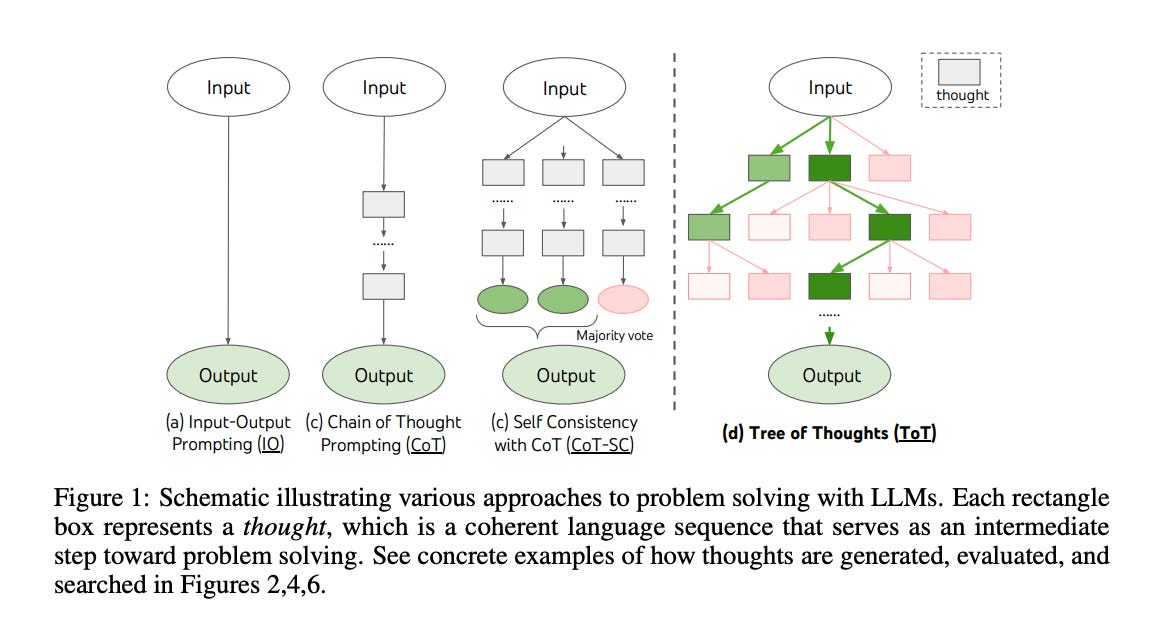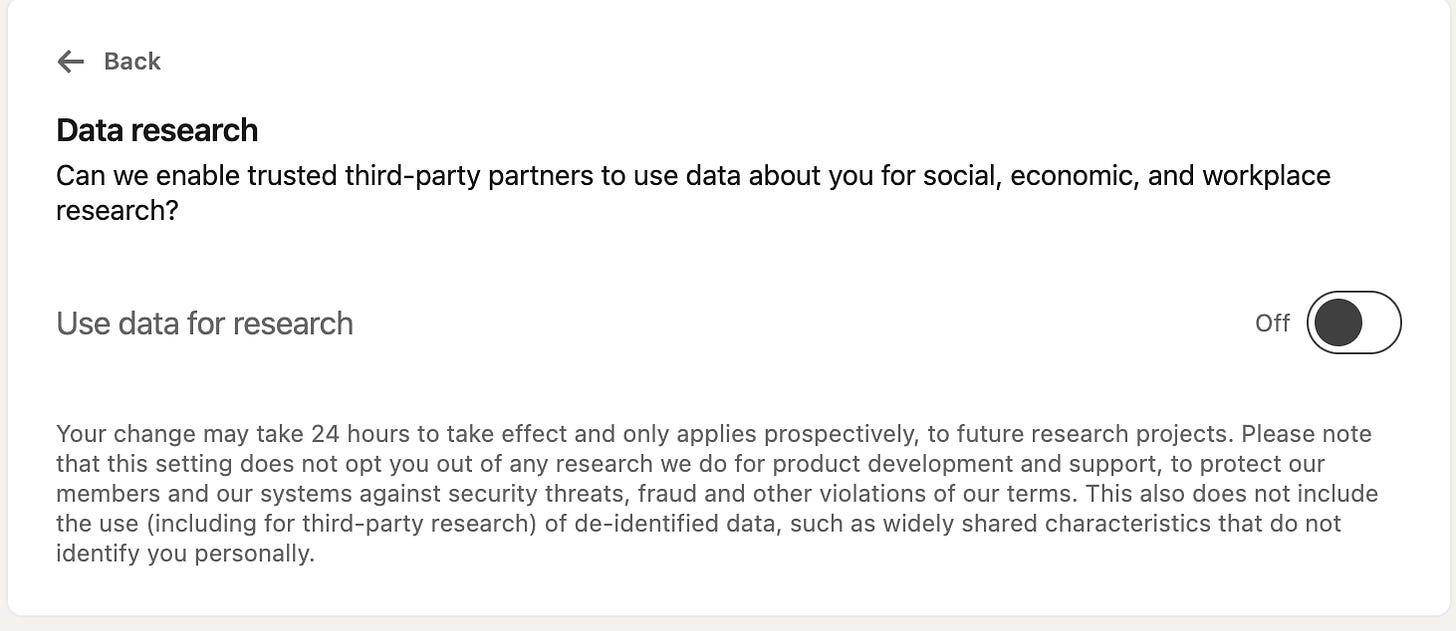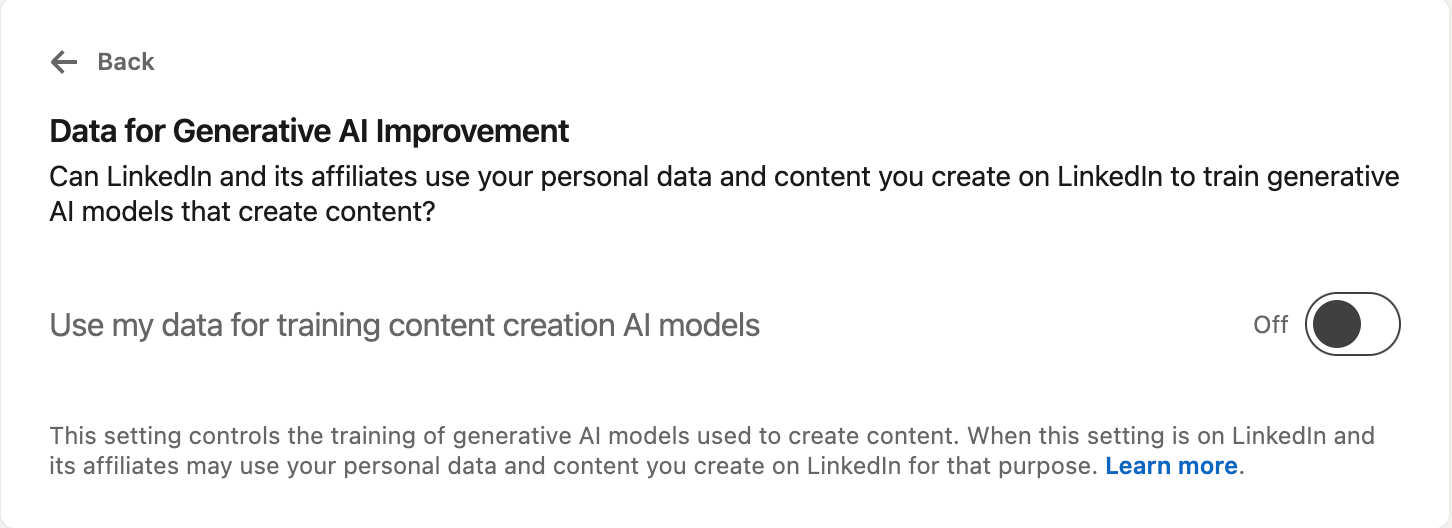Mastering Prompt Engineering: From Basics to Advanced Techniques - Part 2
The Art of Effective Prompting: AI and Beyond
Hello Neuro Evolution Community,
Welcome back to our in-depth exploration of prompt engineering, Part 2. Whether you're in technology, healthcare, finance, or any other field, this newsletter will equip you with the knowledge to maximize AI-generated outputs and boost your productivity.
In case you missed the last post:
Intermediate Prompt Engineering Techniques
Self-Consistency
Self-consistency generates multiple reasoning paths and aggregates results for more reliable outputs. Instead of taking the obvious step-by-step, or greedy path, self-consistency prompts the model to sample a variety of reasoning paths. Then, the model aggregates the final answer based on multiple inputs from the various paths. If you want to read the paper, you can find it here.
Pro Tip: Use self-consistency for problems that might have multiple valid approaches or where the reasoning process is as important as the final answer. This technique helps in achieving more robust and reliable outputs, especially for complex analytical tasks in finance, healthcare and technology sectors. Here is an example prompt for financial related tasks:
Prompt: Calculate the total return on an investment using the following scenarios:
Q. An investor bought 100 shares of a stock at $50 per share. After a year, the stock price increased by 20% and paid a dividend of $2 per share. What's the total return on investment?
A. Let's break this down:
1. Initial investment: 100 shares * $50 = $5,000
2. Stock price after 20% increase: $50 * 1.20 = $60
3. Value of shares after price increase: 100 * $60 = $6,000
4. Dividend income: 100 shares * $2 = $200
5. Total value: $6,000 + $200 = $6,200
6. Total return: ($6,200 - $5,000) / $5,000 * 100 = 24%
The total return on investment is 24%.
Q. A different investor purchased a bond for $10,000 with a 5% annual coupon rate. After 2 years, they sold the bond for $10,500. What's their total return on investment?
A.
[Generate three different reasoning paths for this problem and then provide the most consistent answer]
Tree of Thoughts (ToT)
Tree of Thoughts prompting explores multiple decision paths simultaneously, allowing for more nuanced problem-solving. If you want to read the paper, you can find it here.
Pro Tip: Use ToT for complex decisions with multiple viable options. Here is an example for the healthcare industry:
Prompt: Develop a treatment plan for a patient with type 2 diabetes and hypertension. Consider:
1. Medication-focused approach
2. Lifestyle modification-focused approach
3. Combined approach
For each, explore:
- Potential benefits
- Possible risks and side effects
- Long-term outcomes
Synthesize findings to recommend the most balanced and effective treatment plan.What I found interesting this past week:
OpenAI’s new model o1 provides a better reasoning with basic prompting.
For your information, by default, LinkedIn opted you to use your data for “Generative AI” improvements. Here is how you can opt out:
The quote, "In any moment of decision, the best thing you can do is the right thing, the next best thing is the wrong thing, and the worst thing you can do is nothing" is often attributed to Theodore Roosevelt.
What's Next?
In part 3, we will cover more advanced techniques which will further enhance your ability to craft effective prompts for complex scenarios.
Stay curious, experiment, and let’s build the future together! 🧠 🔍




